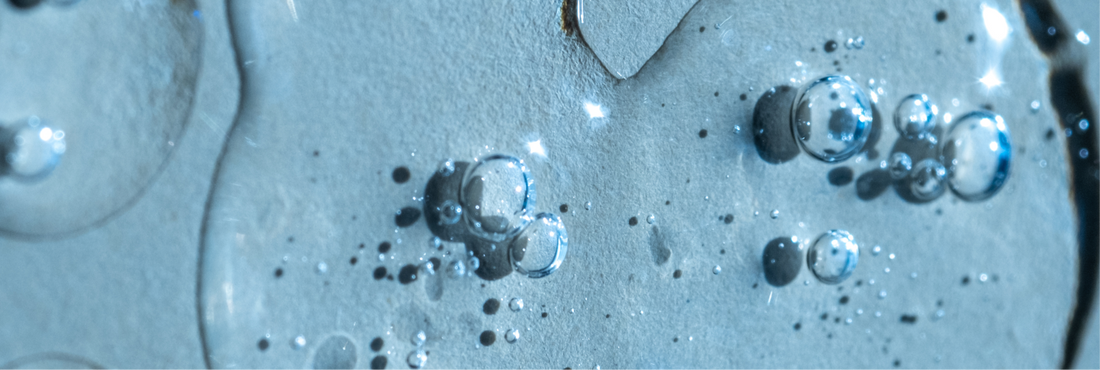
The Truth About Hyperpigmentation: Here’s How to Treat It Safely
Share
Hyperpigmentation is one of the most common and misunderstood skin concerns. Whether it’s the result of acne, sun exposure, or inflammation, dark spots can linger long after the initial issue has resolved. And while many products promise quick fixes, the reality is that treating hyperpigmentation requires patience, consistency, and a barrier-friendly approach.
This Insights post explores the causes of hyperpigmentation, how it differs from acne scars, which treatments are safe (and which to avoid), and how to build a skincare ritual that works without disrupting its natural balance.
What Is Hyperpigmentation?
Hyperpigmentation occurs when the skin produces excess melanin—the pigment responsible for your natural skin tone—in specific areas, leading to uneven coloration. This discoloration can appear as dark spots, patches, or post-inflammatory marks, and is often the result of an overactive healing response. It can be triggered by:
- Post-inflammatory responses from acne, eczema, or irritation
- UV exposure that overstimulates melanocytes
- Hormonal changes, such as melasma
- Physical trauma to the skin (like picking or aggressive exfoliation)
These spots can appear flat and vary in shade from light brown to deep gray or purple, depending on skin tone and depth of pigmentation.

Hyperpigmentation vs. Acne Scars: What’s the Difference?
It's easy to confuse acne hyperpigmentation with acne scars, but they’re not the same:
- Post-inflammatory hyperpigmentation (PIH) is a discoloration left behind after inflammation. It doesn’t involve a change in skin texture and often fades over time with the right care.
- Acne scars, on the other hand, are changes in skin texture—such as pitted or raised areas—caused by collagen loss or overproduction during healing.
Understanding this distinction is key to choosing the right treatment. While texture-based scarring may require clinical intervention (like microneedling or laser treatments), PIH often responds well to topical brighteners and skin barrier support.
Ingredients That Work for Hyperpigmentation
To reduce the appearance of dark spots safely, look for formulas that gently brighten while supporting the skin’s natural renewal cycle. Some of the most effective ingredients include:
- Peptides – Especially GHK-Cu, which can help even skin tone, reduce visible damage, and support collagen repair.
- Niacinamide – Helps regulate pigment production, reduce redness, and strengthen the skin barrier.
- Azelaic acid – Offers both anti-inflammatory and melanin-inhibiting effects; well tolerated by sensitive skin.
- Licorice root extract – A natural option for brightening and calming irritation.
When selecting a hyperpigmentation serum, choose one that combines brightening ingredients with hydrating and soothing elements, this ensures efficacy without disrupting the barrier.

What to Avoid When Treating Hyperpigmentation
Some treatments can worsen pigmentation or damage sensitive skin if used incorrectly. Be cautious with:
- High-strength exfoliants – While AHAs/BHAs can help with cell turnover, overuse can cause inflammation and rebound pigmentation.
- Hydroquinone – A potent melanin inhibitor that may cause irritation or rebound pigmentation, especially with long-term use.
- Harsh scrubs or manual exfoliators – These can aggravate inflammation, especially in acne-prone skin.
Always patch test new products and introduce actives gradually – hyperpigmentation can worsen if the skin is over-treated.
The Importance of UV Protection in Managing Hyperpigmentation
Sun exposure is a major contributor to persistent hyperpigmentation, and even minimal unprotected UV exposure can compromise the results of ongoing treatment. To protect your skin and support visible improvement:
- Choose a broad-spectrum sunscreen for hyperpigmentation with at least SPF 30.
- Reapply every 2 hours when outdoors.
- Mineral sunscreens with zinc oxide can also help soothe and protect sensitive skin.
Incorporating a dedicated hyperpigmentation SPF into your morning ritual is essential, without it, no treatment will be fully effective.

Targeting Discoloration While Supporting the Skin Barrier
For skin experiencing post-inflammatory hyperpigmentation or sensitivity, harsh brightening treatments can often do more harm than good. GLOW offers a gentler, science-backed approach. Its formula features GHK-Cu, a copper peptide known to improve skin tone uniformity and support visible regeneration. Combined with Acetyl Octapeptide-3 (Snap-8) and Acetyl Hexapeptide-8 (Argireline), GLOW helps reduce the appearance of fine lines and may soften texture-related unevenness over time.
The inclusion of Palmitoyl Peptides helps reinforce the skin barrier and support collagen synthesis—both essential for fading discoloration over time. Hyaluronic Acid delivers deep hydration, which can help soothe inflammation and maintain a healthy skin environment, key for preventing future pigmentation.
Rather than targeting pigment directly with aggressive actives, it supports the skin’s natural regenerative processes, creating a stronger foundation for healthy, even-toned skin.
Try Before You Commit
If you're navigating post-inflammatory hyperpigmentation or have sensitive skin, starting with a smaller size can be a smart step. GLOW’s 5 mL sample allows you to experience our multi-peptide serum without committing to the full bottle – ideal for patch testing.
Explore the sample here.

Safe, Consistent Care Wins
If you're wondering how to get rid of hyperpigmentation or reduce other forms of discoloration, the answer lies in consistency, not intensity. Instead, prioritize gentle brightening agents, daily broad-spectrum sun protection, and formulas that support barrier function. Over time, this targeted approach encourages pigment regulation and a more even skin tone without compromising the skin’s integrity.